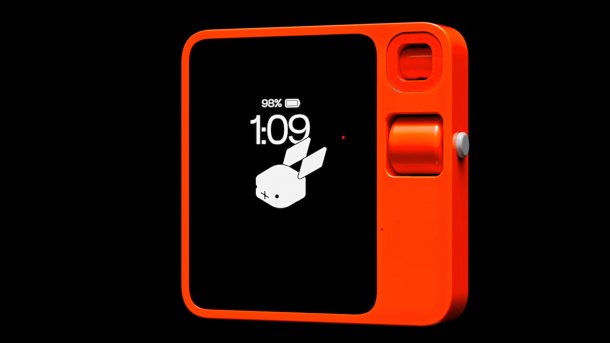First tests of the Rabbit r1: not an AI wonder machine after all?
The Rabbit R1 is supposed to make it possible to operate websites in natural language. According to initial tests, however, this has not yet worked well.

Bright red: the Rabbit R1 AI device.
(Bild: Rabbit)
It was the secret star of this year's CES trade fair: The 200-dollar AI machine Rabbit R1, which is supposed to be able to carry out complex actions controlled only by voice. For example, "Order me the top-rated vegan Margherita pizza, which can be with me in under 20 minutes." This is to be made possible by a "large action model", i.e. an AI model trained to operate websites. In the meantime, the first devices have apparently been delivered in the USA and the first test and hands-on reports have been published.
At least better than AI Pin
Almost all testers agree that the R1 is not as big a flop as the recently launched AI pin Humane AI Pin. Nevertheless, the consensus is that the software still has major problems and still requires a lot of reworking. For example, AI Youtuber Matthew Berman demonstrates that although you can initiate a food order by voice command, the whole procedure takes significantly longer than a manual order via a delivery app. The short battery life and the sometimes unintuitive operation via touchscreen, push button and dial were also criticized.
Most tests praised the unconventional design of the hardware, which comes from the Swedish design company Teenage Engineering. The already well-functioning recognition of the built-in camera images was also well received. The results were correct in most cases; the function can also be put to good use, for example for cooking: If you feed the Rabbit R1 a photo of the available cooking ingredients, it spits out recipes that you can prepare with them.
Why isn't the R1 an app?
However, one big question remains unanswered: Why is the R1 a gadget and not an app? Any innovation that the R1 promises has to do with software, not hardware -- ultimately, all it needs is a microphone, camera and internet connection; all things that any smartphone can do. And anyway: Understanding photos and answering questions in natural language, for example, already works flawlessly with the ChatGPT app and a paid account, even in German. Another important issue is data protection and security: to really work as an assistant, the R1 needs access to payment and other accounts. These are stored on Rabbit servers, and access to them is granted by the associated "Rabbithole" account. The question is: will the startup succeed in securing the data and handling it responsibly?
(Note: c't/heise online also ordered a copy of R1 immediately after the announcement, but it has not yet arrived. A test with a focus on usability in German will follow).
(jkj)